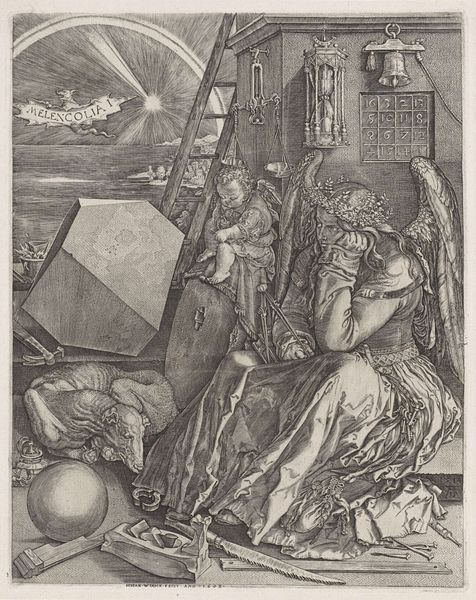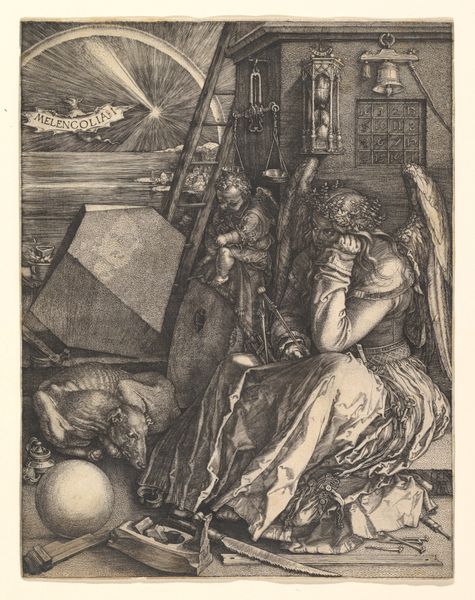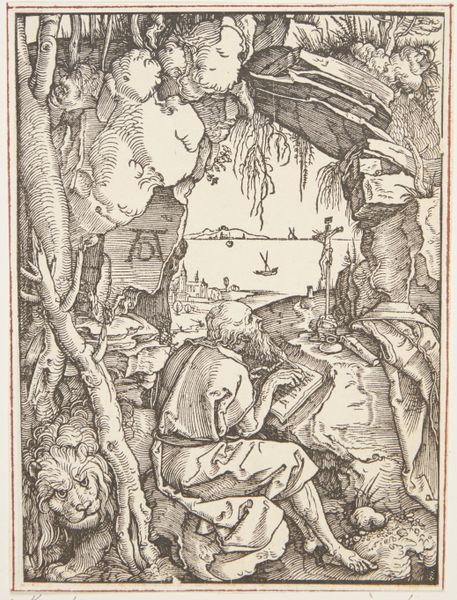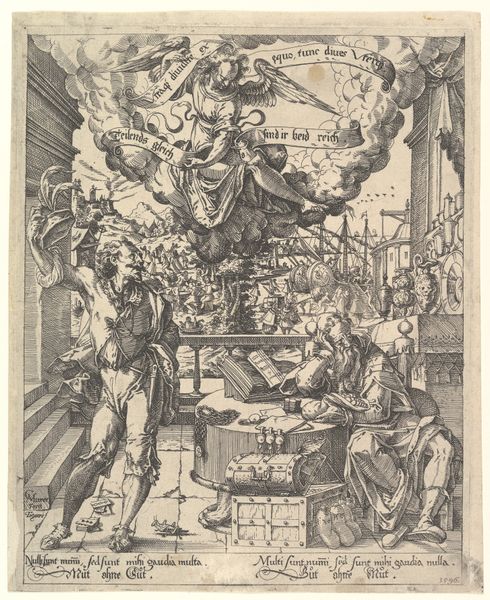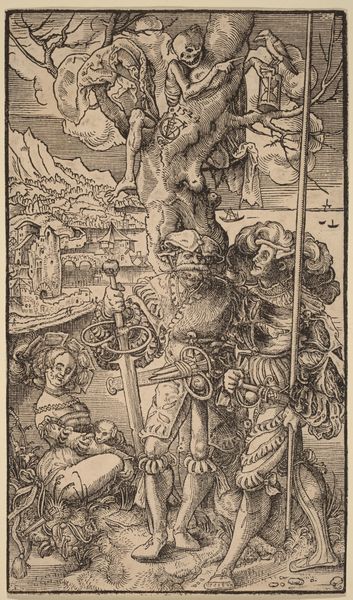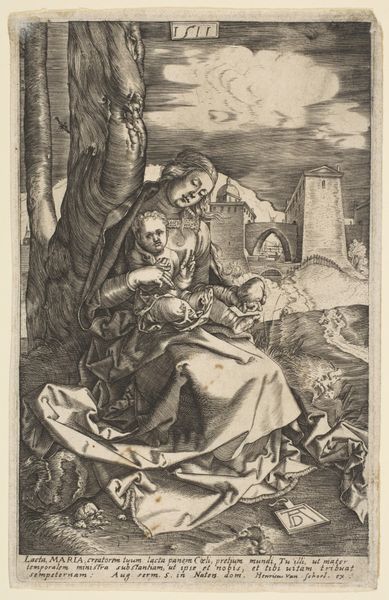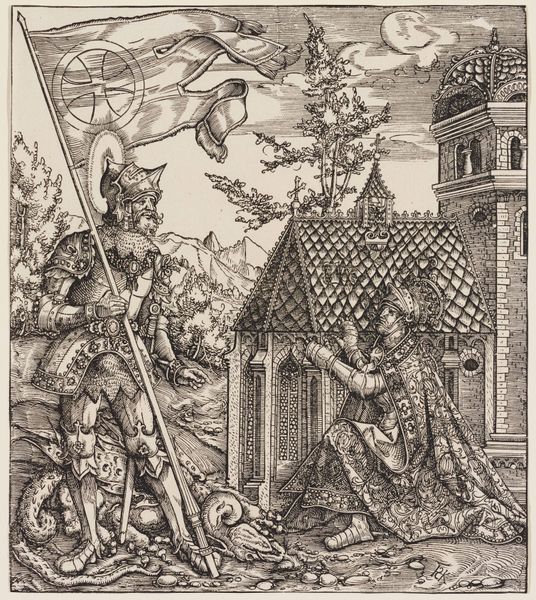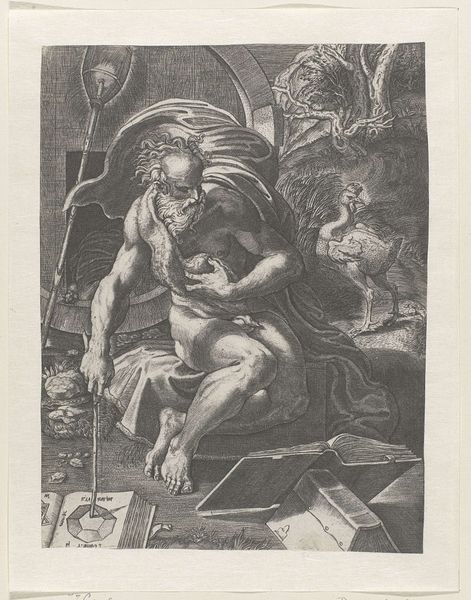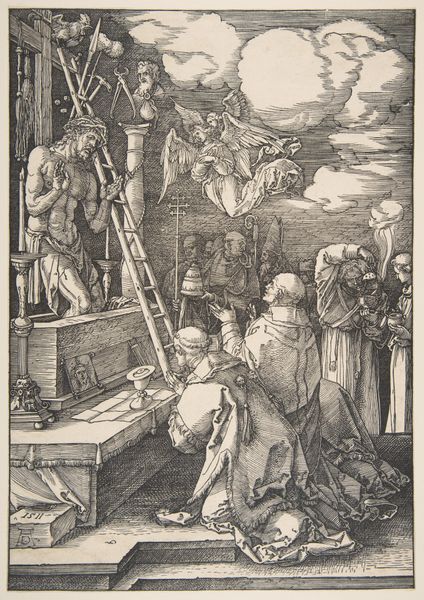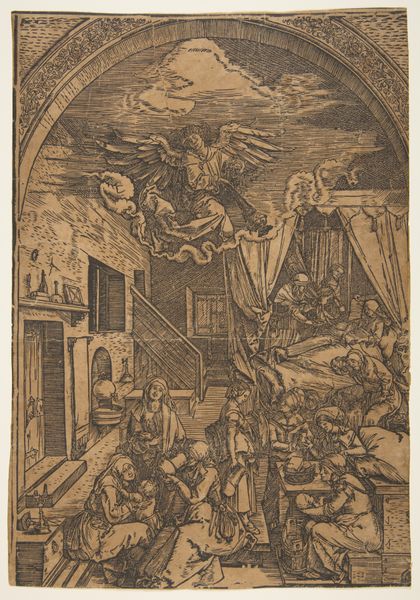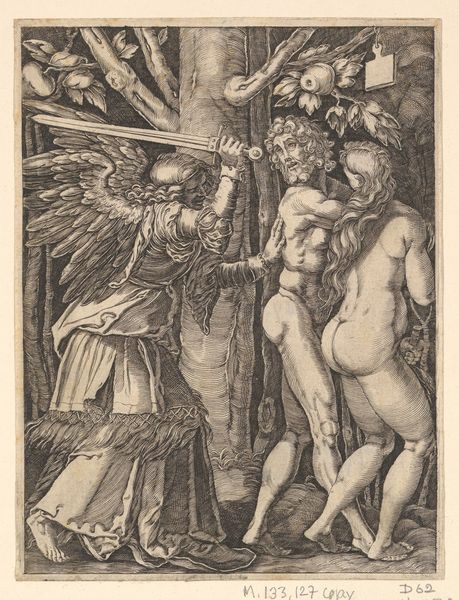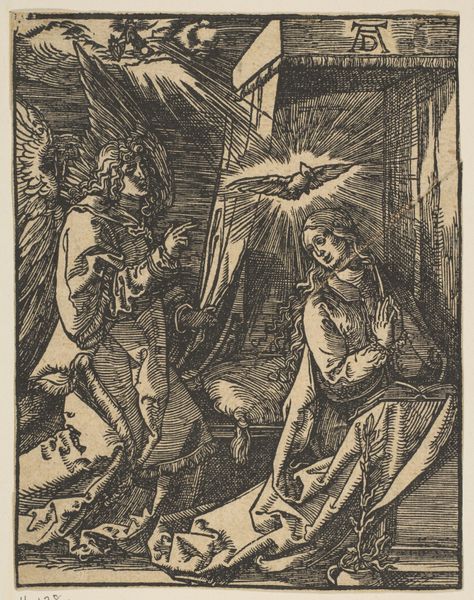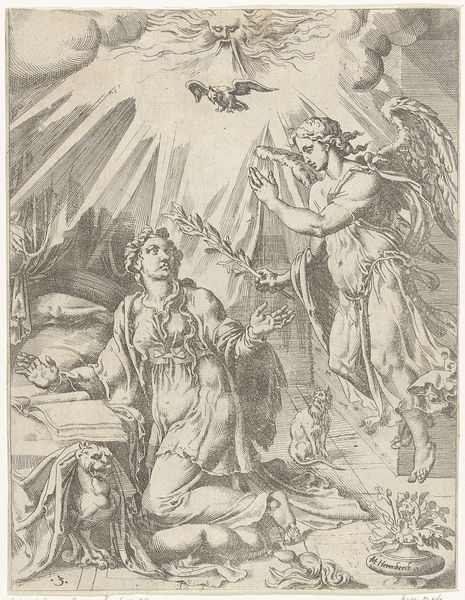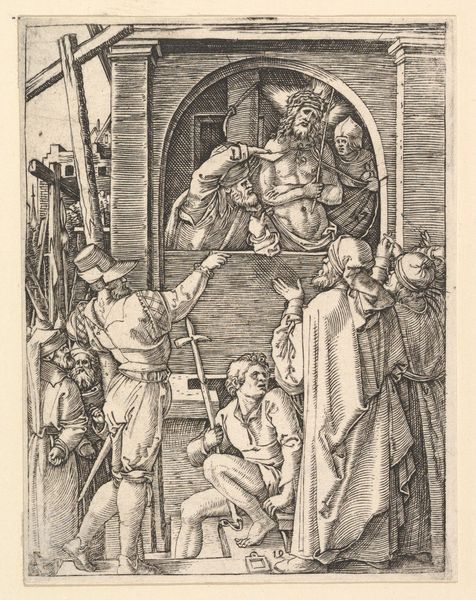
Dimensions: 9 3/8 x 7 5/16 in. (23.81 x 18.57 cm) (plate)9 5/8 x 7 5/8 in. (24.45 x 19.37 cm) (sheet)
Copyright: Public Domain
Albrecht Dürer etched "Melencolia I" in the year of our Lord, 1514. At its heart, the image deals with the symbol of melancholia, once thought to be the affliction of genius. Look closely and you'll see scattered instruments, a sleeping dog, a winged figure. The central figure is a winged woman, embodying deep thought and inactivity, surrounded by symbols of science and craftsmanship. The ladder and radiant comet are not mere decoration; they are a striving for knowledge, reminiscent of the Tower of Babel. See if you can see the instruments of measurement, the hourglass, and the scales - all point to the futility of earthly knowledge when faced with the infinite. The image is a powerful display of cognitive dissonance. This dissonance is not merely intellectual but deeply emotional. The winged woman’s brooding posture, a motif found across centuries from classical sculptures to modern photography, speaks to a universal human experience.
Comments
minneapolisinstituteofart almost 2 years ago
⋮
By any measure, Melencolia I is an arresting image. A magnificent, laurel-crowned angel sits brooding in the foreground. In its hand and strewn about are the tools and materials of physical creation—from hammer and nails to an alchemical crucible (vessel). Sitting on a millstone is a putto, scribbling away on a tablet. Models of ideal geometric forms, such as a sphere and a polyhedron, occupy the left side of the image, along with a sleeping dog. To the right we face the base of a windowless building, perhaps a tower. From it hang a weighing scale, an hourglass, and a bell whose pull-cord extends out of the image. A magic square is carved into the wall, and a ladder leans against the far side of the structure. In the background we see to a distant horizon. In the sky are a rainbow and a comet. A bat-like creature flies through the sky holding a banner reading MELENCOLIA I. Little was written about Dürer’s engraving originally, but over time it became one of the most frequently discussed images in the history of art. In 1568, the pioneering art historian Giorgio Vasari wrote: "Then, having grown both in power and courage, as he saw that his works were prized, Albrecht executed some copper engravings that astonished the world. He also set himself to making an engraving, for printing on a half sheet of paper, of a figure of Melancholy, with all the instruments that reduce those who use them, or rather, all mankind, to a melancholy humor; and in this he succeeded so well that it would not be possible to do more delicate engraving with the burin." We may never know the engraving’s full meaning, but we can be certain that it touches upon many of Dürer’s central interests: the role of the artist as creator; the relationships among the physical, intellectual, and spiritual realms; the study of the natural world; mathematics; esoteric knowledge; and self-awareness. In essence, the engraving became a manifesto on knowing the unknowable and making the unmakeable.
Join the conversation
Join millions of artists and users on Artera today and experience the ultimate creative platform.
